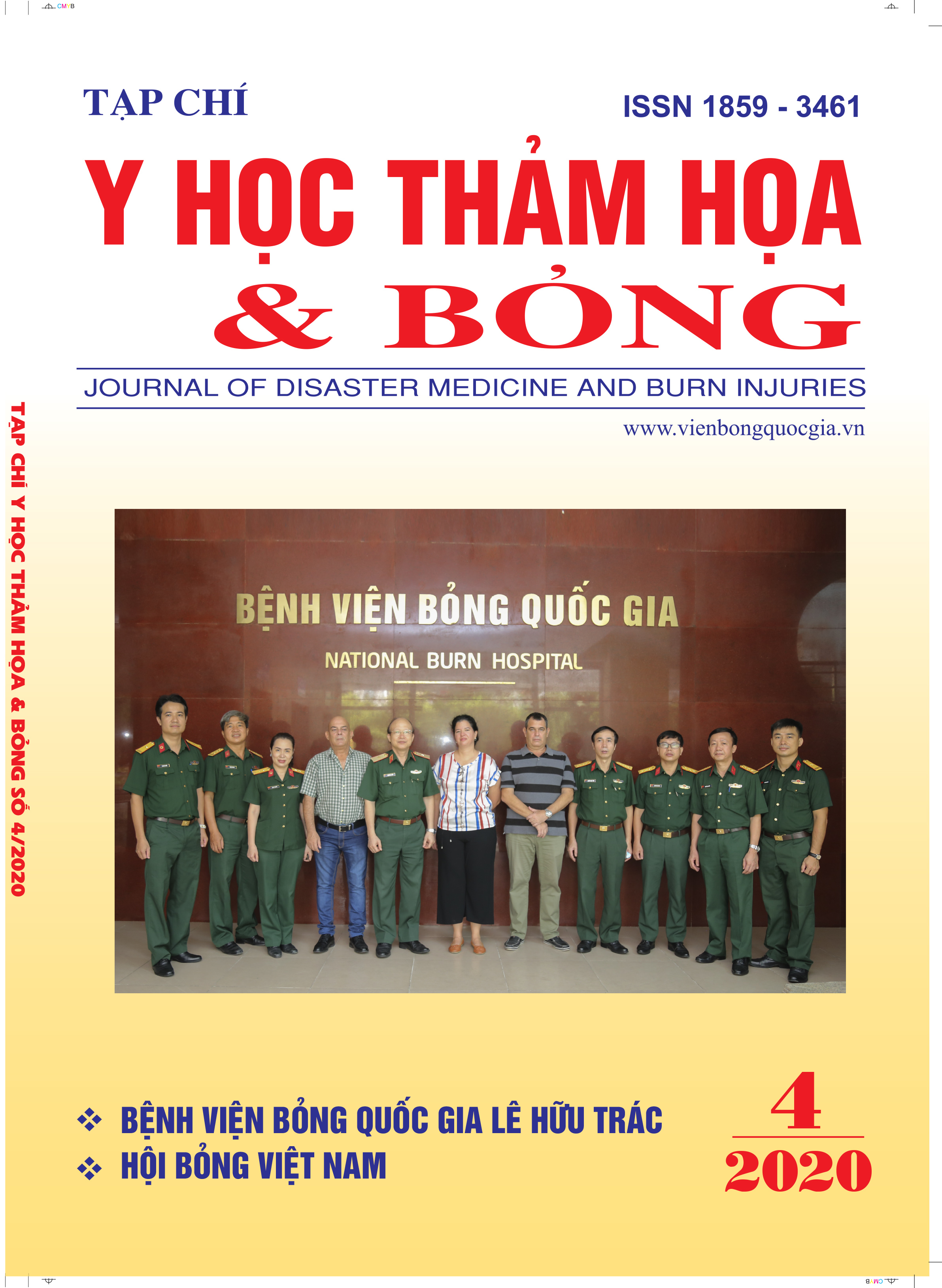Đặc điểm và vai trò tiên lượng của nồng độ Triglyceride huyết thanh ở bệnh nhân bỏng nặng
Nội dung chính của bài viết
Tóm tắt
Nghiên cứu này tìm hiểu sự thay đổi và vai trò tiên lượng của nồng độ Triglyceride (TG) huyết thanh ở bệnh nhân (BN) người lớn bỏng nặng.
Kết quả cho thấy: Tỷ lệ bệnh nhân có tăng TG huyết thanh (≥ 2mmol/l), nồng độ TG huyết thanh tăng dần đạt cao nhất ngày 14 sau bỏng (52,5%; 2,5 ± 0,2mmol/l; p < 0,05). Nồng độ TG huyết thanh cao hơn đáng kể ở các bệnh nhân có diện tích bỏng sâu > 20% diện tích cơ thể và bệnh nhân tử vong ở ngày 7 và 14 sau bỏng, ở bệnh nhân có biến chứng và tử vong. Có mối liên quan thuận mức độ chặt chẽ giữa nồng độ TG huyết thanh với tử vong tại thời điểm ngày thứ 14 (r = 0,64) và 21 (r = 0,63) sau bỏng. Đồng thời, nhóm tăng TG có nguy cơ tử vong cao gấp 7,6 lần so với nhóm còn lại.
Chi tiết bài viết
Từ khóa
Bỏng nặng, nồng độ Triglyceride huyết thanh
Tài liệu tham khảo
2. Nguyễn Như Lâm (2006), Nghiên cứu hiệu quả của nuôi dưỡng sớm đường ruột trong điều trị bệnh nhân bỏng nặng, Luận văn tiến sĩ y học, Học viện Quân y.
3. Wolfe R. R., Herndon D. N., Jahoor F., et al. (1987) Effect of severe burn injury on substrate cycling by glucose and fatty acids. New England Journal of Medicine, 317 (7), 403-408.
4. Herndon D. N., Nguyen T. T., Wolfe R. R., et al. (1994) Lipolysis in burned patients are stimulated by the β2-receptor for catecholamines. Archives of Surgery, 129 (12), 1301-1305.
5. Sahib A. S. (2011) Dyslipidemia after burn injury: A potential therapeutic target. Asian J Pharm Clin Res, 4 (4), 34-36.
6. Khubchandani A., Shaikh M., Sachde J., et al. (2011) Study of Alterations in lipid profile after burn injury. Indian Journal of Burns, 19 (1), 52 -56
7. Jeschke M. G., Gauglitz G. G., Kulp G. A., et al. (2011) Long-term persistence of the pathophysiologic response to severe burn injury. PloS one, 6 (7), e21245.
8. Coombes E. J., Shakespeare P. G., Batstone G. F. (1980) Lipoprotein changes after burn injury in man. The Journal of trauma, 20 (11), 971-975.
9. Kraft R., Herndon D. N., Finnerty C. C., et al. (2013) Association of postburn fatty acids and TGs with clinical outcome in severely burned children. The Journal of Clinical Endocrinology & Metabolism, 98 (1), 314-321.
10. Dalal R., Sharma C. A., Chakravarty B. B., et al. (2014) A study of prognostic factors for prediction of complications and outcomes in burn patients. Indian Journal of Burns, 22 (1), 56-61.


